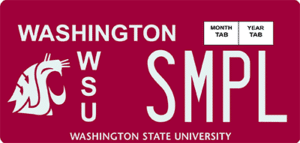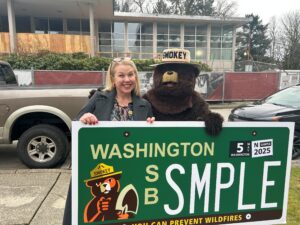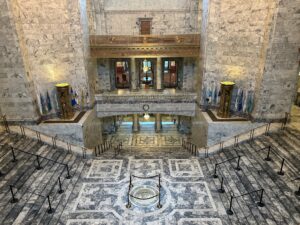
An Empty and Quiet Legislative Building… For Now!
(Photo Courtesy: Erica Hallock)
Trivia!
This week we are talking license plates! Hang with me, it’s actually rather interesting…
Other than commemorating special occasions, in what year did Washington state begin issuing specialty license plates? Bonus question: What was the subject of the first specialty plate?
Highlights of the Week
Governor Ferguson – Budget Reduction Exercises
On February 27, Governor Bob Ferguson held a press availability to preview a recommended $4 billion in savings and efficiencies to help address the state’s budget crisis. His approach is summarized in this press release. These reductions would be in addition to the approximately $3 billion in savings proposed in Governor Inslee’s “Book Two” budget.
Before I get to the specific early learning items Governor Ferguson proposed, here are some take-aways from his press conference:
- The actual amount of the four-year budget shortfall varies depending on who you ask. In his press availability today, Governor Ferguson stated his administration is assuming a $15 billion shortfall over four years.
- Governor Ferguson’s recommendations are based on potential savings identified by state agencies. The Governor’s recommendations do not include every agency identified savings opportunity. Governor Ferguson said state agencies identified about $1 billion more in potential savings that he is not advancing to the Legislature for their consideration. Each agency’s suggested reduction list will be posted on the Office of Financial Management website by February 28. We will report on these in next week’s Notes from Olympia.
- Not surprisingly, right out of the gate the press asked the Governor about his appetite for new revenue. He replied that it is still too soon to consider revenue from his perspective. He also said the state is not in a position to tax its way out of its budget hole.
- Governor Ferguson acknowledged his team did not have sufficient time to perform a thorough review of the full budget. He also recognized the upcoming March 18 Revenue Forecast could change the budget outlook for the better, or the worse.
- Governor Ferguson proposes funding Collective Bargaining Agreements with state employees but he also suggests a $300 million savings by instituting a one-day a month furlough for state employees for a two-year period.
Governor Ferguson released a 152-page document detailing potential savings. Related to early learning, the Governor proposes a total of $254.8 million in savings for DCYF in the following areas:
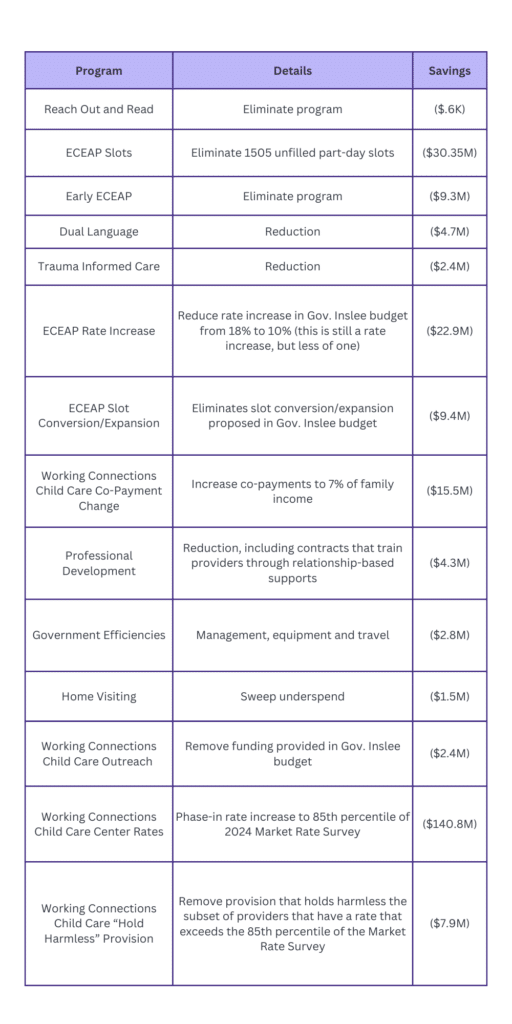
A Busy Week of Fiscal Committee Meetings Before Today’s Fiscal Cutoff
The focus of week seven was almost exclusively on fiscal committees in advance of the Friday, February 28 fiscal committee cutoff. With the state’s budget shortfall, it was not uncommon to see bills get scheduled – and then unscheduled – for hearings or executive sessions. We also saw adoption of a number of amendments as bill sponsors and advocates worked to reduce the costs of bills to keep them moving.
Each Thursday, Start Early Washington updates its bill tracker with the latest information on bills we are following. As we reach each cutoff, we transfer the bills that are not “moving” into a separate chart below to make the active bills easier to identify.
Below we have included updates on key early learning bills. Please note that with fiscal cutoff scheduled after the release of this newsletter, it’s a good idea to check the legislative website for the latest information.
Changes to Fair Start for Kids Act Advance
On February 25, the Senate Ways and Means Committee held a public hearing on SB 5752 (C. Wilson) which would modify many aspects of the Fair Start for Kids Act. You can watch the hearing beginning at 3:18 on TVW.
The real-world impacts of the legislation were noted in this week’s Democratic Media Availability in opening comments by Senate Majority Leader Jamie Pedersen who referenced this particular bill hearing and the “wrenching testimony from the real human beings who are going to be affected by the cuts we are likely going to have to make…”
The fiscal note prepared for the bill assumes $332.5 million in savings for the 2025-27 biennium and $547.6 million in savings for the 2027-29 biennium as well as additional indeterminate savings. (The fiscal note was prepared prior to the amendments adopted in the Senate Ways and Means Committee on February 27, so those changes are not reflected in the fiscal note). Fiscal notes are an estimate of the fiscal impact of a bill prepared by the relevant state agency and approved by the Office of Financial Management.
On February 27, the Senate Ways and Means Committee took executive action to approve SB 5752 with amendments.
The substantive parts of the amendments relate to co-payments, setting in place a new family co-payment schedule effective October 1, 2025, through September 30, 2026, to be replaced by a per child co-payment schedule effective October 1, 2026.
These changes to co-payments apply to new applicants and re-applicants for subsidies. We believe this means a family’s co-payment would not change in the middle of their 12-month authorization. Additionally, student parents and children participating in Working Connections Child Care as a result of their engagement in Child Protective Services would not have a co-payment.
Following are the new co-payment structures:
Family Co-Payment Structure
Effective October 1, 2025 – September 30, 2026
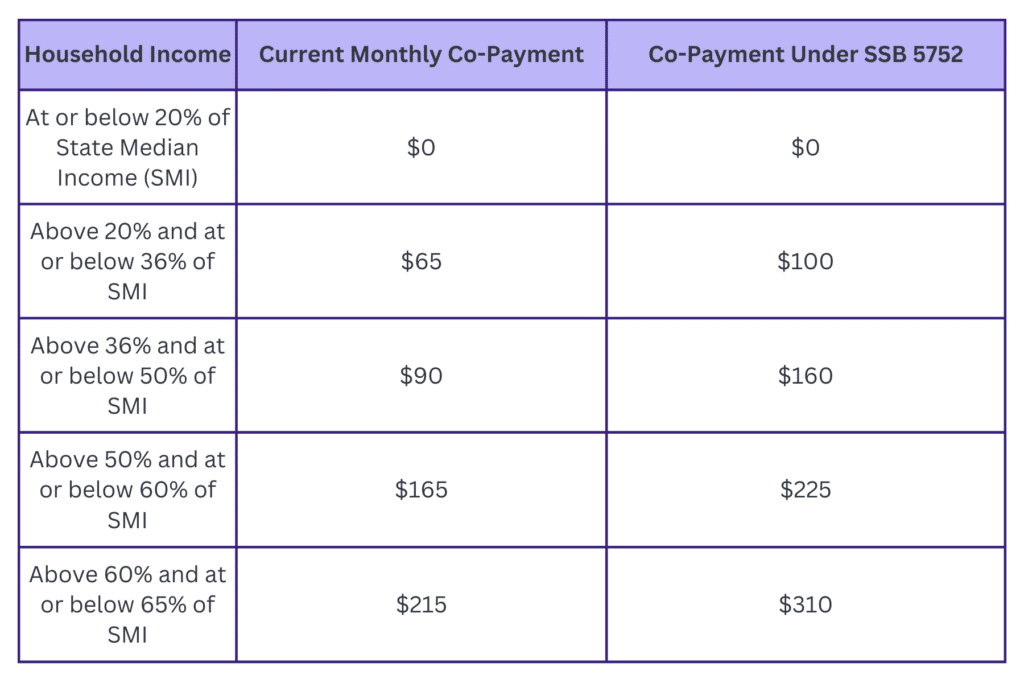
Per Child Co-Payment Structure
Effective October 1, 2026
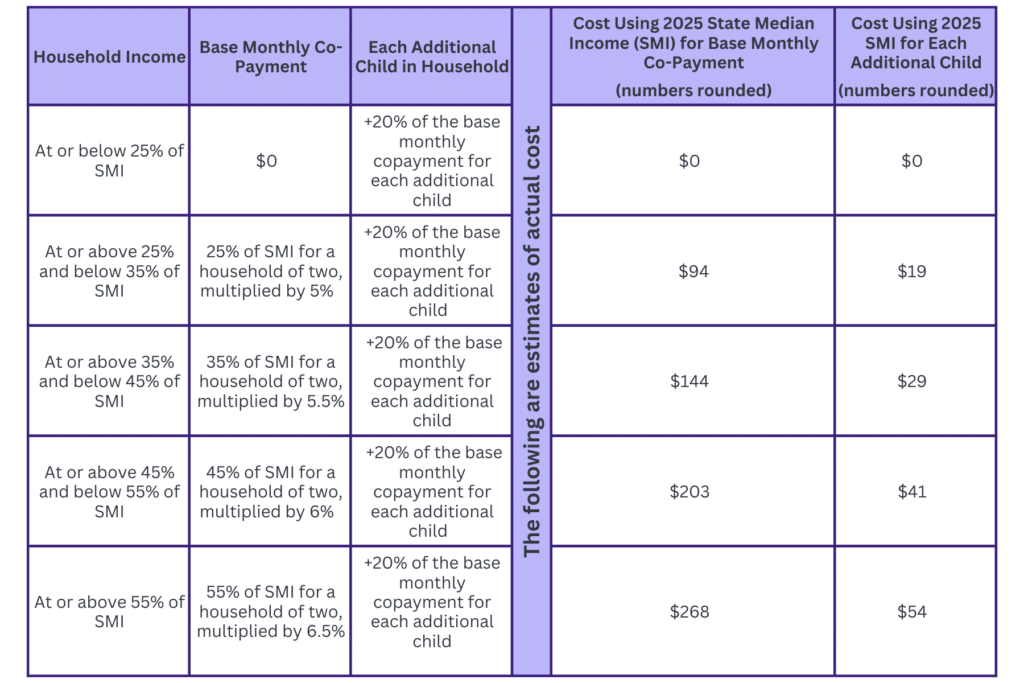
For information on the underlying bill details, refer to the February 14 Notes from Olympia. Be sure to note the amended co-payment approach above replaces what was included in the original bill.
The bill now moves to Senate Rules.
New Transition to Kindergarten Bills Introduced
This week, two new bills were introduced related to Transition to Kindergarten, HB 2012 (Bergquist) and SB 5769 (Wellman).
Both bills seek to pause the growth of the Transition to Kindergarten (TTK) program in slightly different ways. HB 2012 limits TTK program enrollment for each school district, charter school or state-tribal education compact school to its 2024-25 school year enrollment, beginning in the 2025-26 school year. SB 5769 limits Transition to Kindergarten Program funding beginning in the 2025-26 school year to the threshold set by enrollment during the 2024-25 school year.
SB 5769 received a public hearing in the Senate Ways and Means Committee on February 27 and, at the date of this writing, was scheduled for executive session on February 28. HB 2012 was referred to the House Appropriations Committee but has not received a hearing as of this writing. The other TTK bill, SHB 1450 (Santos), has also been referred to House Appropriations and has also not been scheduled for a hearing. We can presume these bills are all “NTIB,” or Necessary to Implement the Budget.
Provider Qualifications Bill Passes Fiscal Committee
On February 26, the House Appropriations Committee took executive action to approve SHB 1648 (Dent), as amended in committee. The amendment requires DCYF to convene the required stakeholder group and produce the directed report within existing resources.
The bill now moves to the House Rules Committee.
It’s Official – it’s Secretary Senn!
On Tuesday, February 25, the Senate unanimously voted to confirm Tana Senn as the second official Secretary of the Department of Children, Youth and Families. Congratulations, Secretary Senn!
What’s on Deck for Next Week
On the Floor Again…
Like clockwork, following fiscal committee cutoff, activity on the Capitol campus will shift to the Legislative building as lawmakers will debate bills that have made it to the floor in their respective house of origin prior to the next cutoff date of March 12 – aptly named the House of Origin Cutoff.
During floor activity, there are typically few committee hearings and legislators tend to spend a lot of time in their party caucuses being briefed on bill details and preparing for floor debate. Lobbyists spend hours on end on the “3rd floor” desperate for their priority bills to be approved (or defeated) so they can leave the circus.


